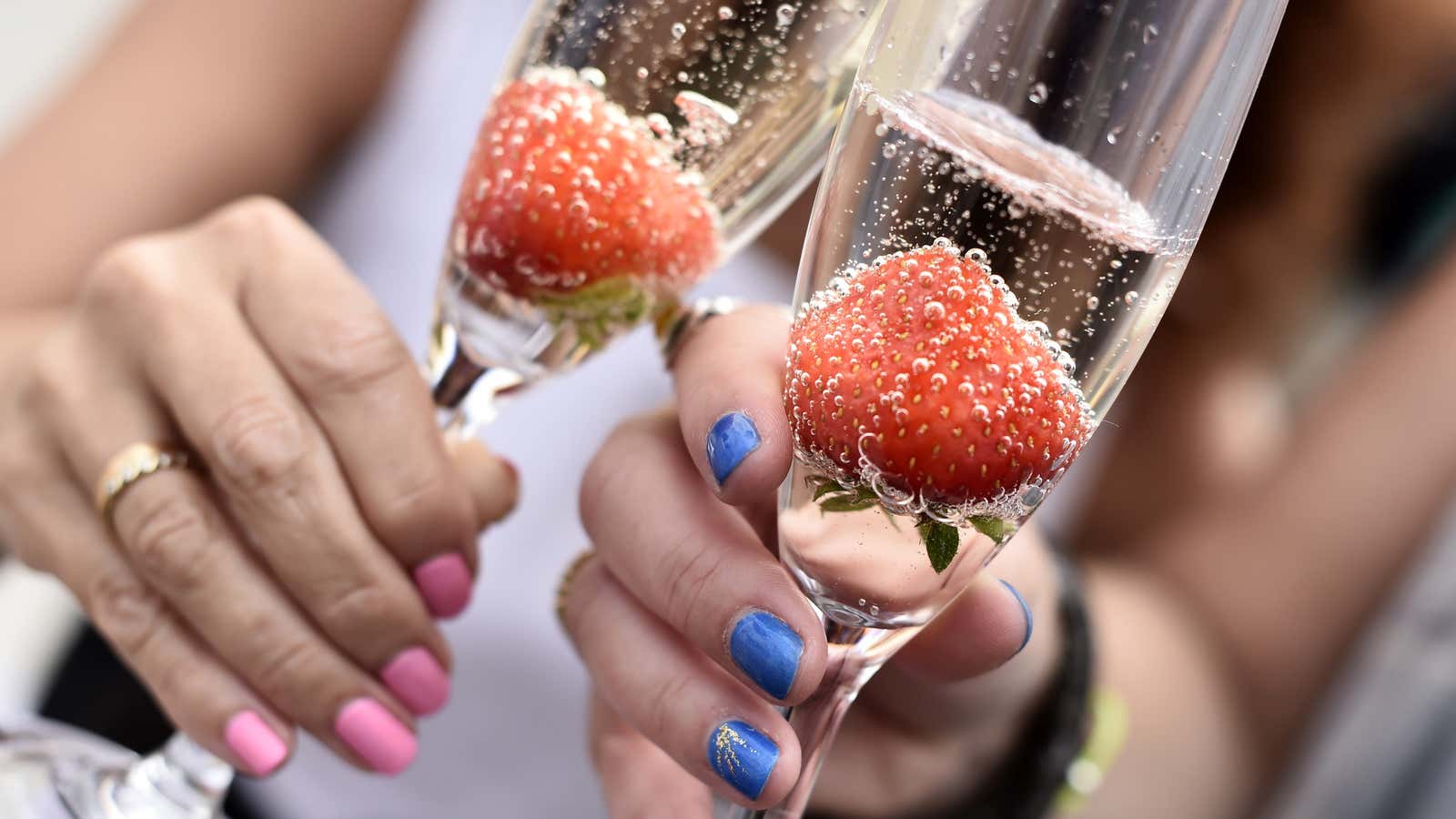Champagne corks popped across France on Sunday when the World Heritage Committee of the United Nations Educational, Scientific, and Cultural Organization (UNESCO) granted world-heritage status to the champagne industry’s vineyards, production sites, and sales points.
According to a press release published by the UN agency, these “hillsides, houses, and cellars” of the Champagne wine region in northeastern France deserve recognition. “The property encompasses sites where the method of producing sparkling wines was developed on the principle of secondary fermentation in the bottle since the early 17th century to its early industrialization in the 19th century.”
Strictly speaking, only sparkling wines that originate in the Champagne wine region qualify as lower-case “champagne.” It might be bubbly, but if it comes from anywhere but the eponymous region, it’s not champagne. The French have rigidly enforced their right to the champagne moniker since 1891, when the specification was first enshrined in international law with the Madrid Agreement, and once again by the Treaty of Versailles in 1919.
Other sites to be awarded world-heritage status by during Sunday’s 39th session of the World Heritage Committee include Christiansfeld, an 18th-century Moravian Church settlement in Denmark and two Danish hunting forests, Store Dyrehave and Gribskov; the vineyards of Burgundy, in western France; and the Diyarbakir fortress and Hevsel gardens of the Upper Tigris River Basin in Turkey.




